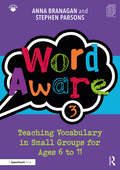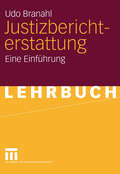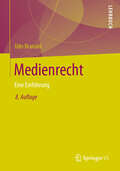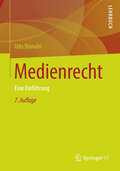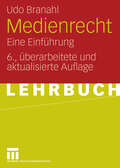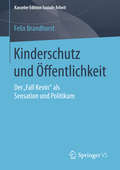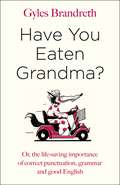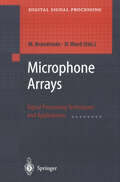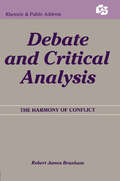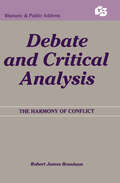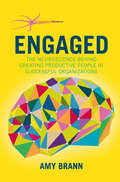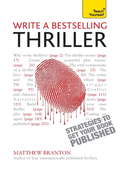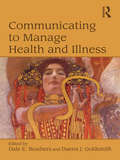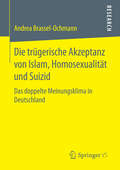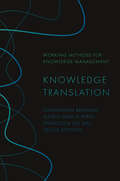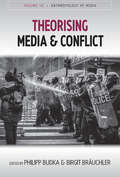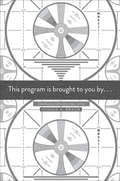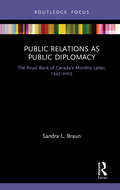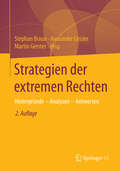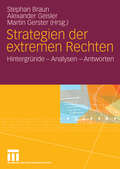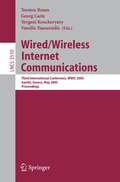- Table View
- List View
Word Aware 3: Teaching Vocabulary in Small Groups for Ages 6 to 11
by Anna Branagan Stephen ParsonsWord Aware 3 is a comprehensive, practical and engaging resource that focuses on teaching vocabulary and word learning skills to children aged 6 to 11 years who have vocabulary learning needs. For many children, particularly those with Special Educational Needs and Disabilities (SEND) or those whose home language isn’t English (ELL or EAL learners), the vocabulary of the classroom can be a barrier to learning. This book outlines how to best support these children who require extra help, offering concrete, easy-to-implement activities and resources for use in small groups, to maximise the impact on learning and open up access to the curriculum. Word Aware 3: Takes a highly practical, evidence-based and curriculum-focused approach to vocabulary learning that supports a broad range of learners Includes photocopiable and downloadable planning, intervention and evaluation resources Provides staff training resources and an overview video presented by the authors This book can be used as an adjunct to Word Aware 1, or as an intervention on its own. Although it is most suited to children aged 6 to 11 years, it may be adapted for older students with significant learning needs. It is an essential resource for teaching assistants and learning support assistants and will also save time for special educational needs co-ordinators (SENCOs) and speech and language therapists (SaLTs) who are keen to establish effective vocabulary interventions.
Word Aware 3: Teaching Vocabulary in Small Groups for Ages 6 to 11
by Anna Branagan Stephen ParsonsWord Aware 3 is a comprehensive, practical and engaging resource that focuses on teaching vocabulary and word learning skills to children aged 6 to 11 years who have vocabulary learning needs. For many children, particularly those with Special Educational Needs and Disabilities (SEND) or those whose home language isn’t English (ELL or EAL learners), the vocabulary of the classroom can be a barrier to learning. This book outlines how to best support these children who require extra help, offering concrete, easy-to-implement activities and resources for use in small groups, to maximise the impact on learning and open up access to the curriculum. Word Aware 3: Takes a highly practical, evidence-based and curriculum-focused approach to vocabulary learning that supports a broad range of learners Includes photocopiable and downloadable planning, intervention and evaluation resources Provides staff training resources and an overview video presented by the authors This book can be used as an adjunct to Word Aware 1, or as an intervention on its own. Although it is most suited to children aged 6 to 11 years, it may be adapted for older students with significant learning needs. It is an essential resource for teaching assistants and learning support assistants and will also save time for special educational needs co-ordinators (SENCOs) and speech and language therapists (SaLTs) who are keen to establish effective vocabulary interventions.
Justizberichterstattung: Eine Einführung
by Udo BranahlDie Justiz bildet für juristisch nicht vorgebildete Journalistinnen und Journalisten einen schwierigen, schwer zu durchschauenden Gegenstand der Berichterstattung. Diese Einführung dient dazu, ihnen die Justizberichterstattung zu erleichtern und neue, bislang vernachlässigte Berichterstattungsfelder außerhalb der Strafjustiz zu erschließen. .
Medienrecht: Eine Einführung
by Udo BranahlDiese Einführung in das Medienrecht bietet einen umfassenden, allgemein verständlichen Überblick über die Rechte und Pflichten des Journalisten in Presse, Rundfunk, Fernsehen und Internet. Mit der 8. Auflage wird die Darstellung auf den Stand vom März 2019 gebracht. Die Digitalisierung und sich damit entwickelnde Technologien verändern die journalistische Praxis. So gibt es eine Entwicklung zur Datafizierung journalistischer Recherche und Produktion, für die Bezeichnungen wie Daten- und Roboterjournalismus stehen. Weiter bilden sich neue Darstellungsformen heraus. Dieser Wandel der journalistischen Praxis erfordert eine Anpassung der Rechtsstandards an die Netzwelt. Insbesondere das Urheber-, Haftungs- und Datenschutzrecht sind dabei von Bedeutung. Deshalb wurde der Text um entsprechende Hinweise ergänzt. Diese wurden von Tobias Gostomzyk verfasst.Der InhaltRecherchefreiheit und ihre Grenzen • Die Berichterstattungsfreiheit und ihre Grenzen • Der Schutz der persönlichen Ehre • Das Allgemeine Persönlichkeitsrecht • Der Schutz des Unternehmens • Bildberichterstattung und Abbildungsschutz • Kriminalberichterstattung • Urheberrecht • Der Schutz der öffentlichen Sicherheit und der Jugend • Werbung in den Massenmedien • Die Sicherung des RechtsgüterschutzesDie AutorenDr. Udo Branahl war bis zu seiner Pensionierung Professor für Medienrecht am Institut für Journalistik der Technischen Universität Dortmund.Dr. Tobias Gostomzyk ist Professor für Medienrecht am Institut für Journalistik der Technischen Universität Dortmund.
Medienrecht: Eine Einführung
by Udo BranahlDiese Einführung in das Medienrecht bietet einen umfassenden, allgemein verständlichen Überblick über die Rechte und Pflichen des Journalisten in Presse, Rundfunk, Fernsehen und Internet. Die nunmehr in der 7. Auflage vorliegende Darstellung berücksichtigt Gesetzesänderungen und Rechtsprechung bis Dezember 2012.
Medienrecht: Eine Einführung
by Udo BranahlDiese Einführung in das Medienrecht bietet einen umfassenden, allgemein verständlichen Überblick über die Rechte und Pflichten des Journalisten in Presse, Rundfunk, Fernsehen und Internet. Die nunmehr in 6. Auflage vorliegende Darstellung berücksichtigt Gesetzesänderungen und Rechtsprechung bis Ende 2008.
Kinderschutz und Öffentlichkeit: Der „Fall Kevin“ als Sensation und Politikum (Kasseler Edition Soziale Arbeit #1)
by Felix BrandhorstFelix Brandhorst untersucht anhand des „Falles Kevin“ in Bremen aus dem Jahr 2006 den Zusammenhang zwischen medialer Inszenierung, politischer Theatralisierung und fachlicher Positionierung der Sozialen Arbeit im Feld des Kinderschutzes. Der Fall war eine mediale Sensation, die politischen Handlungsdruck auslöste und zum Ausgangspunkt einer protektiv-repressiven Wendung in der Praxis der Kinder- und Jugendhilfe wurde. Ziel der Diskursanalyse des Autors ist es, das aus der medialen und politischen Aufarbeitung hervorgegangene routinierte Wissen über den „Fall Kevin“ in eine Krise der Befremdung zurückzuführen. Dabei fragt er danach, auf welcher empirischen Grundlage die Veränderungsprozesse beruhen, die die aktuelle Situation im Kinderschutz und in der Sozialen Arbeit prägen.
Have You Eaten Grandma?: Or, The Life-saving Importance Of Correct Punctuation, Grammar, And Good English
by Gyles BrandrethThe go-to good English guide from the grammar guru himself, Gyles Brandreth . . . __________Why, like, does everyone keep saying 'like'? Why do apostrophe's keep turning up in the wrong place? Why do we get confused when using foreign phrases - and vice versa?Is it 'may be' or 'maybe'? Should it be 'past' or 'passed'? Is it 'referenda' or 'referendums'? FFS, what's happening to our language!?Our language is changing, literacy levels are dwindling and our grasp of grammar is at crisis point, so you wouldn't be alone in thinking WTF! But do not despair, Have You Eaten Grandma? is here: Gyles Brandreth's definitive (and hilarious) guide to punctuation, spelling, and good English for the twenty-first century. Without hesitation or repetition (and just a touch of deviation) Gyles, the Just A Minute regular and self-confessed grammar guru, skewers the linguistic horrors of our time, tells us where we've been going wrong (and why), and reveals his tips and tricks to ensure that, in future, we make fewer (rather than 'less') mistakes. End of. (Is 'End of' alright? Is 'alright' all right? You'll find out right here . . . )And why not check out the Have You Eaten Grandma? podcast, starring Gyles and a host of other grammar and linguisitic lovers and experts
Microphone Arrays: Signal Processing Techniques and Applications (Digital Signal Processing)
by Michael Brandstein Darren WardThis is the first book to provide a single complete reference on microphone arrays. Top researchers in this field contributed articles documenting the current state of the art in microphone array research, development and technological application.
Debate and Critical Analysis: The Harmony of Conflict (Routledge Communication Series)
by Robert James BranhamRather than approach debate primarily as a form of interscholastic competition, this unique book identifies it as an activity that occurs in many settings: scientific conferences, newspaper op-ed pages, classrooms, courts of law, and everyday domestic life. Debate is discussed as an integral part of academic inquiry in all disciplines. As in all fields of study, various competing views are advanced and supported; Debate and Critical Analysis is designed to better prepare the student to assess and engage them. This text posits four characteristics of true debate -- argument development, clash, extension, and perspective -- which form the basic structure of the book. Each concept or aspect of argument covered is illustrated by an example drawn from contemporary or historical sources, allowing the reader to actually see the techniques and strategies at work. All popular forms of competitive debate, including "policy," "Lincoln-Douglas," "value-oriented," and "parliamentary," are discussed in detail -- as embedded in the actual topical controversies with which they are concerned. In this way, the student can learn the structures, reasoning processes, and strategies that may be employed, as well as the practical affairs of debating, from brief-writing to the flowsheet.
Debate and Critical Analysis: The Harmony of Conflict (Routledge Communication Series)
by Robert James BranhamRather than approach debate primarily as a form of interscholastic competition, this unique book identifies it as an activity that occurs in many settings: scientific conferences, newspaper op-ed pages, classrooms, courts of law, and everyday domestic life. Debate is discussed as an integral part of academic inquiry in all disciplines. As in all fields of study, various competing views are advanced and supported; Debate and Critical Analysis is designed to better prepare the student to assess and engage them. This text posits four characteristics of true debate -- argument development, clash, extension, and perspective -- which form the basic structure of the book. Each concept or aspect of argument covered is illustrated by an example drawn from contemporary or historical sources, allowing the reader to actually see the techniques and strategies at work. All popular forms of competitive debate, including "policy," "Lincoln-Douglas," "value-oriented," and "parliamentary," are discussed in detail -- as embedded in the actual topical controversies with which they are concerned. In this way, the student can learn the structures, reasoning processes, and strategies that may be employed, as well as the practical affairs of debating, from brief-writing to the flowsheet.
Engaged: The Neuroscience Behind Creating Productive People in Successful Organizations (The Neuroscience of Business)
by Amy BrannNeuroscience is revolutionizing our understanding of human psychology and behaviour. By showing how to apply this new understanding to how you recruit, manage, and develop your people, Brann is enabling you to deliver a step change in organizational performance and individual achievement.
Write a Bestselling Thriller: Strategies to write a book that thrills, enthralls and sells (Teach Yourself)
by Matthew BrantonWrite a Bestselling Thriller: Strategies to Get Your Book Published is a step by step guide to putting together an unputdownable narrative. It takes you on a journey through each component of the thriller, breaking the process down into key factors such as the Hero, the Trigger, the Story, Scenes and Style. The whole of the second part is devoted to the publishing process, while the book features hundreds of pratical exercises. There are diagnostic tests, case studies, practical exercises and Aide Memoire boxes. Each chapter concludes with a reminder of the key points of the chapter (Focus Points) and a round-up of what to expect in the next (Next Step) will whet your appetite for what's coming and how it relates to what you've just read.
Communicating to Manage Health and Illness
by Dale E. Brashers Daena GoldsmithCommunicating to Manage Health and Illness is a valuable resource for those in the field of health and interpersonal communication, public health, medicine, and related health disciplines. This scholarly edited volume advances the theoretical bases of health communication in two key areas: 1) communication, identity, and relationships; and 2) health care provider patient interaction. Chapters aim to underscore the theory that communication processes are a link between personal, social, cultural, and institutional factors and various facets of health and illness. Contributors to the work are respected scholars from the fields of communication, public health, medicine nursing, psychology, and other areas, and focus on ways in which patient identity is communicated in health-related interactions. This book serves as an excellent reference tool and is a substantial addition to health communication literature.
Communicating to Manage Health and Illness
by Dale E. Brashers Daena GoldsmithCommunicating to Manage Health and Illness is a valuable resource for those in the field of health and interpersonal communication, public health, medicine, and related health disciplines. This scholarly edited volume advances the theoretical bases of health communication in two key areas: 1) communication, identity, and relationships; and 2) health care provider patient interaction. Chapters aim to underscore the theory that communication processes are a link between personal, social, cultural, and institutional factors and various facets of health and illness. Contributors to the work are respected scholars from the fields of communication, public health, medicine nursing, psychology, and other areas, and focus on ways in which patient identity is communicated in health-related interactions. This book serves as an excellent reference tool and is a substantial addition to health communication literature.
Die trügerische Akzeptanz von Islam, Homosexualität und Suizid: Das doppelte Meinungsklima in Deutschland
by Andrea Brassel-OchmannAndrea Brassel-Ochmann hinterfragt in diesem Buch die unbedingte und unbeschränkte Rede- und Meinungsfreiheit unserer vermeintlich tabulosen Gesellschaft. Sie legt das herrschende hegemoniale Meinungsklima offen und enthüllt Prozesse und Diskurse um Zugehörigkeit und Ausschluss, Abweichung und Normalität, Fremdheit und Alterität in den drei Untersuchungsfeldern Islam, Homosexualität und Suizid. Deutlich werden die gegenwärtigen Grenzen der Akzeptabilität in Deutschland, die sich in einem doppelten Meinungsklima, einer verlogenen Akzeptanz, offenbaren.
Knowledge Translation (Working Methods for Knowledge Management)
by Constantin Bratianu Alexeis Garcia-Perez Francesca Dal Mas Denise BedfordKnowledge translation is a topic that originated in the field of health sciences where the need to move research to practice is of critical importance. In parallel, the field of knowledge sciences has developed a research base around knowledge transfer, knowledge sharing, knowledge exchange, knowledge articulation and knowledge absorption. This book brings these two important tracks together and synthesizes the fragmented literatures. It also draws from essential work on human communication and considers how these concepts are affected by the knowledge economy. The book raises awareness of the critical role that knowledge translation plays in every academic field of study, and in everyday life. To demonstrate this role, the book presents a grounding model that readers can use to better ‘see’ their knowledge translation challenges and opportunities. Drawing on the author team’s experience in a range of domains and sectors, the book explores knowledge translation in the fields of manufacturing, infectious diseases, automated call centers, regulatory development and compliance, financial lending, transportation safety, and doctor-patient discourse.
Knowledge Translation (Working Methods for Knowledge Management)
by Constantin Bratianu Alexeis Garcia-Perez Francesca Dal Mas Denise BedfordKnowledge translation is a topic that originated in the field of health sciences where the need to move research to practice is of critical importance. In parallel, the field of knowledge sciences has developed a research base around knowledge transfer, knowledge sharing, knowledge exchange, knowledge articulation and knowledge absorption. This book brings these two important tracks together and synthesizes the fragmented literatures. It also draws from essential work on human communication and considers how these concepts are affected by the knowledge economy. The book raises awareness of the critical role that knowledge translation plays in every academic field of study, and in everyday life. To demonstrate this role, the book presents a grounding model that readers can use to better ‘see’ their knowledge translation challenges and opportunities. Drawing on the author team’s experience in a range of domains and sectors, the book explores knowledge translation in the fields of manufacturing, infectious diseases, automated call centers, regulatory development and compliance, financial lending, transportation safety, and doctor-patient discourse.
Theorising Media and Conflict (Anthropology of Media #10)
by Birgit Bräuchler Philipp BudkaTheorising Media and Conflict brings together anthropologists as well as media and communication scholars to collectively address the elusive and complex relationship between media and conflict. Through epistemological and methodological reflections and the analyses of various case studies from around the globe, this volume provides evidence for the co-constitutiveness of media and conflict and contributes to their consolidation as a distinct area of scholarship. Practitioners, policymakers, students and scholars who wish to understand the lived realities and dynamics of contemporary conflicts will find this book invaluable.
This Program Is Brought to You By...: Distributing Television News Online
by Prof. Joshua A. BraunJournalism, television, cable, and online media are all evolving rapidly. At the nexus of these volatile industries is a growing group of individuals and firms whose job it is to develop and maintain online distribution channels for television news programming. Their work, and the tensions surrounding it, provide a fulcrum from which to pry analytically at some of the largest shifts within our media landscape. Based on fieldwork and interviews with different teams and organizations within MSNBC, this multi-disciplinary work is unique in its focus on distribution, which is rapidly becoming as central as production, to media work.
Public Relations as Public Diplomacy: The Royal Bank of Canada’s Monthly Letter, 1943-2003 (Global PR Insights)
by Sandra L. BraunThis is a study of the Royal Bank of Canada’s Monthly Letter, which was initially created in 1920 as a traditional economic newsletter and later evolved quite serendipitously into a publication marvel when, in 1943, it came under the influence of John Heron, journalist and publicist, gaining mass appeal both domestically and abroad. This concise history documents the inception, development and rise to popularity of the Monthly Letter, telling the untold story of how a corporate newsletter became a tool of international public diplomacy. The purpose of this writing is to demonstrate the entanglement of the fields of public diplomacy and public relations and to offer a more palatable conceptualization of them as two discrete, but necessary, parts of a whole. It acknowledges the varied soup of contested terminology which surrounds the field of public diplomacy (e.g. corporate diplomacy, cultural diplomacy and economic diplomacy). This work conceptualizes public diplomacy and public relations as two parts of a whole in which the sum is greater than its individual parts, juxtaposing the two fields in relation to one another, diminishing neither. The contents of this work provide a broad overview of the fields of public diplomacy and public relations that could serve as an introduction and discussion point for students and scholars in both fields and offers a specific case study around which lively discussion and additional study can ensue.
Public Relations as Public Diplomacy: The Royal Bank of Canada’s Monthly Letter, 1943-2003 (Global PR Insights)
by Sandra L. BraunThis is a study of the Royal Bank of Canada’s Monthly Letter, which was initially created in 1920 as a traditional economic newsletter and later evolved quite serendipitously into a publication marvel when, in 1943, it came under the influence of John Heron, journalist and publicist, gaining mass appeal both domestically and abroad. This concise history documents the inception, development and rise to popularity of the Monthly Letter, telling the untold story of how a corporate newsletter became a tool of international public diplomacy. The purpose of this writing is to demonstrate the entanglement of the fields of public diplomacy and public relations and to offer a more palatable conceptualization of them as two discrete, but necessary, parts of a whole. It acknowledges the varied soup of contested terminology which surrounds the field of public diplomacy (e.g. corporate diplomacy, cultural diplomacy and economic diplomacy). This work conceptualizes public diplomacy and public relations as two parts of a whole in which the sum is greater than its individual parts, juxtaposing the two fields in relation to one another, diminishing neither. The contents of this work provide a broad overview of the fields of public diplomacy and public relations that could serve as an introduction and discussion point for students and scholars in both fields and offers a specific case study around which lively discussion and additional study can ensue.
Strategien der extremen Rechten: Hintergründe - Analysen - Antworten
by Stephan Braun Alexander Geisler Martin GersterDieser Band behandelt nicht nur deskriptiv das Phänomen des Rechtsextremismus, sondern analysiert die konkreten Strategien von Akteuren und Organisationen des gesamten rechten Spektrums – ihre Grundlagen, Bedingungen und Ausprägungen auf allen Ebenen der Gesellschaft. Dabei werden bewusst unterschiedliche Perspektiven der akademischen und praktischen Auseinandersetzung mit dieser heterogenen Strömung aufgegriffen und Gegenstrategien angesprochen, die sich im Umgang mit den unterschiedlichen Teilen der extremen Rechten bewährt haben. Die aktualisierte und erweiterte Neuauflage bezieht dabei verschiedene, zum Teil sogar kontroverse Standpunkte aus Wissenschaft, Publizistik, der politischen Praxis und der Zivilgesellschaft ein. Gerade in der Vielfalt der Zugänge kristallisiert sich ein Gesamtbild heraus, das den Kern des strategischen Wirkens der extremen Rechten deutlich hervortreten lässt.
Strategien der extremen Rechten: Hintergründe - Analysen - Antworten
by Stephan Braun Alexander Geisler Martin GersterDieser Band schließt eine Lücke: Er behandelt nicht nur deskriptiv das Phänomen des Rechtsextremismus, sondern analysiert die konkreten Strategien rechtsextremistischer Akteure und Organisationen, ihre Grundlagen, Bedingungen und Ausprägungen auf allen Ebenen der Gesellschaft. Dabei werden bewusst die vielfältigen Perspektiven der akademischen und praktischen Auseinandersetzung mit dieser heterogenen Strömung aufgegriffen und Gegenstrategien angesprochen, die sich im Umgang mit den unterschiedlichen Teilen dieses Spektrums bewährt haben. Der Band bezieht dabei verschiedene, zum Teil sogar kontroverse Standpunkte aus Wissenschaft, Publizistik, der politischen Praxis und der Zivilgesellschaft ein.
Wired/Wireless Internet Communications: Third International Conference, WWIC 2005, Xanthi, Greece, May 11-13, 2005, Proceedings (Lecture Notes in Computer Science #3510)
by Torsten Braun Georg Carle Yevgeni Koucheryavy Vassilis TsaoussidisWelcome to the 3rd International Conference on Wired/Wireless Internet C- munications (WWIC). After a successful start in Las Vegas and a selective c- ference in Germany, this year’s WWIC demonstrated the event’s maturity. The conference was supported by several sponsors, both international and local, and became the o?cial venue for COST Action 290. That said, WWIC has now been established as a top-quality conference to promote research on the convergence of wired and wireless networks. This year we received 117 submissions, which allowed us to organize an - citing program with excellent research results, but required more e?ort from the 54 members of the international Program Committee and the 51 additional reviewers. For each of the 117 submitted papers we asked three independent - viewers to provide their evaluation. Based on an online ballot phase and a TPC meeting organized in Colmar (France), we selected 34 high-quality papers for presentation at the conference. Thus, the acceptance rate for this year was 29%.
